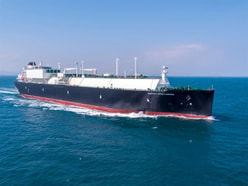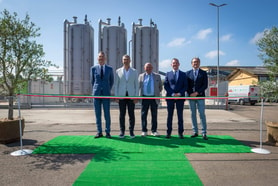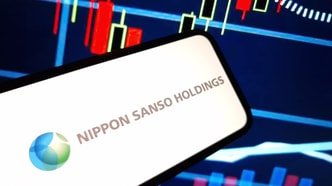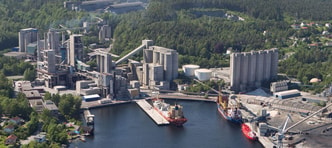Carbon Dioxide Recovery and Production
Background
Carbon dioxide (CO2) is a natural and essential component of life on earth. Air contains about 0.03 percent by volume. Plants require CO2 to grow (photosynthesis), and in the process release oxygen into the atmosphere. CO2 is also produced naturally by the decay of all organic materials and is exhaled when animals breathe. CO2 is also a by-product of many industrial processes, emitted whenever fossil fuels are burned, as well as by some chemical and biological processes. But in environmental terms CO2 is a cause for concern because, along with other greenhouse gases, CO2 emissions are implicated in global warming and many countries have pledged to reduce their CO2 emissions in line with international treaties such as the Kyoto protocol.
Nevertheless, in the industrial gas business, CO2 is an important gas with a number of useful applications, including environmentally friendly ones in which the gas replaces much more damaging products. In the food industry, CO2 is used throughout the cold chain to ensure quality, freshness and food safety. In the US, around half the total CO2 consumption is used for cooling and freezing in the food industry. It is also used in the modified atmosphere packaging of food. In Europe, more than 50 percent of CO2 is consumed by the beverage industry – and worldwide the amount of CO2 used in beverages looks set to increase as people in developing economies such as India and China develop a greater taste for carbonated soft drinks. As a chemical it is used in pH control for water treatment, for inerting and for solvent extraction in the chemical industry. In some processes it can be used to replace other more environmentally hazardous products such as hydrocarbon based solvents, mineral acids and poisonous fumigants. In Japan, one of the biggest application for CO2 is in welding (see text box: Purity standards).
Globally, the actual merchant demand for CO2 runs at about 16 million tons in which the US consumes 40 percent and is by far the largest market for the industrial gases industry. However, the industry is looking at the need for alternative sources of CO2 to meet the growing merchant demand as well as trying to look at ways of solving the CO2 emissions problem with recovery technology and sequestration techniques.
Traditional sources
When it comes to sourcing CO2, there are three main options: natural, on-purpose production or recovery. Natural sources include natural wells and mineral springs with a high CO2 gas content. This is common in Germany, Turkey, southern US and there is a large natural field stretching from Hungary into the Balkan States to Greece and to Romania. In countries such as Hungary and Serbia, the CO2 content in gas wells can be as high as 70-90 percent. But in worldwide terms, these sources only account for a minor percentage of the CO2 recovered.
A second source is, believe it or not, the on-purpose production of CO2 by fuel combustion plants. This is a common source for producing CO2 in countries lacking natural sources or viable by-product streams (e.g. Africa, Middle East, Asia/Far East and South America). Kerosene, diesel and natural gas are just some of the fuels that are burnt to produce a CO2 stream. Many beverage /bottling companies use this method to carbonate soft drinks in remote locations.
By far the biggest source of CO2 used for merchant applications is its recovery from industrial activity, recovered as a by-product of other processes, be it chemical, synthesis gas or from industrial combustion units. Carbon dioxide can be produced as a by-product from chemical processes, such as fertiliser production (ammonia), purification of certain synthesis gases (e.g. hydrogen) or ethylene oxide production.
A major source of crude CO2 in Europe comes from ammonia production – during which hydrocarbon molecules are broken up in steam reformers to release hydrogen and carbon with CO2 as a by-product. A typical ammonia plant normally produces around 1.5 tonnes of CO2 for each tonne of ammonia produced. Companies like Yara, a major CO2 supplier to the European market, obtain the CO2 sold to the food and drinks industry from its ammonia plants in Porsgrunn (Norway), Sluiskil (the Netherlands) and Ferrara (Italy) as a by-product of its fertilizer manufacture.
However, in Europe the costs of ammonia production are increasing due to higher natural gas costs, which have resulted in a number of ammonia plants being temporarily closed. Also ammonia production is seasonal and the peak CO2 demand is when some ammonia plants are shut for the low season for fertiliser use. As a result, European CO2 producers are having to seek out alternative sources.
Evolving Merchant Sources
CO2 is produced as a by-product from fermentation processes (e.g. brewing/beer production) but most breweries use up the CO2 they produce in their own products. Bioethanol plants offer the CO2 producers an alternative fermentation source for their future supplies. Although not yet common in Europe, bioethanol production looks set to grow and follow the trend in the US, with a number of projects already in the pipeline. $quot;Biofuel plants,$quot; says Dieter Tillmann, Manager of CO2 Technology and Projects at Linde Gas Division in Pullach Germany, $quot;are an interesting source. But in contrast to ammonia, where the by-product impurities are very consistent, the impurities in CO2 from bioethanol plants are much more variable. This means CO2 producers will have to develop more efficient processes to produce CO2 from a variable feedstock.$quot;
Another growing source is driven on the back of the increasing demand for Hydrogen and hydrogen production using steam reforming processes. If the carbon monoxide element is not needed, a shift reaction can produce more CO2 which can be recovered and purified for merchant use. This is increasingly seen as a source in both Europe and the US.
Quality and Purification
In the merchant CO2 business, a growing issue is the quality of CO2. Any application associated with food and beverages needs to meet higher standards of quality which places a higher need for improved purification processes. The general production sequence used to produce food grade CO2 involves a pre-concentration, or pre-cleaning step to increase the concentration of CO2 in the raw gas. This is followed by compression, further purification to remove impurities such as hydrocarbons, sulphur compounds, oxygenates and water, then liquefaction and, finally, storage.
The purification steps, notes Tillmann, are a major concern in CO2 production technology. $quot;With new CO2 sources, such as bioethanols, where the impurities present can vary from feedstock to feedstock, it will be necessary to develop new or to adapt existing purification systems,’ he explains. Overcoming this difficulty will present a challenge for the process engineers, but it will offer many benefits.
Companies such as Coca Cola and Pepsi Cola are demanding higher quality CO2 and leaning towards outsourcing production in order to achieve this requirement. A contaminated batch of soft drinks due to a poorer quality CO2 could result in a recall of bottles and cans amounting into millions of dollars/euros in costs.
... to continue reading you must be subscribed









